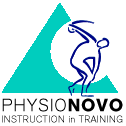TRAIN MORE EFFECTIVELY FOR BACK AND NECK PAIN
PhysioNovo - Applied Rehabilitation and Sports Therapy
Despite intensive and extensive medical and para-medical treatments, back pain still leads to most years of life with limitations and a high burden of disease. Although there is general agreement on the positive effects of physical activity and exercise, according to international guidelines, there is currently no evidence that gives preference to a specific training methodology. However, there is small evidence that training the motor control of the pelvis and scapula has a slightly greater effect on treatment outcomes.
The sometimes impressive and balanced motor skills expressed in various sports and dances are possible because of a close motor connection between the motor skills of arms, legs, and trunk. But healthy, everyday motor skills are also characterized by harmony and aesthetics. The main characteristics of healthy motor skills are a motorically stable spine and well-balanced movements of arms and legs: central stability and peripheral mobility are perfectly matched.
Reduced hip or shoulder mobility immediately leads to disruption of this motor balance. The stability of the trunk decreases because it has to compensate for the reduced movements of arms and legs. Especially in the longer term, complaints are inevitable. More and more recent scientific studies confirm a clear link between disturbedhip and shoulder motor skills and back and neck pain and underline the clinical need for a thorough and comprehensive assessment of motor control skills.
The PhysioNovo training concept focuses on these integral motor skills of the shoulder, hip and spine. By looking at these motor functions of arms and legs as well as the spine as a whole, a different understanding of how back pain arises and how to treat it emerges. This approach offers the therapist/trainer concrete opportunities to devise individually tailored specific exercise programs to counteract nonspecific back pain more effectively.
News
Injury prevention in sport - principles instead of blanket solutions
Read moreInjured again and again? Perhaps it's not due to chance, but to training. If you understand how strain works, how movement is controlled, and what…
Can I return to sport and physical activity with a new joint?
Read moreA question that is not easy to answer, but at the same time is easy to understand. Sports and physical activity are of great importance to many…
Strength training for back pain - magic bullet or wishful thinking?
Read moreMuscle strength can be described as the ability of a skeletal muscle to overcome resistance through muscle contraction and thus generate movement. As…
When your lower back hurts again and again ...
Read moreDo you always have low back pain? Then you are one of many who suffer from it. But there are now new findings about the cause and treatment that may…







